CD34 Rabbit Polyclonal Antibody

cat.: ER0802
| Product Type: | Rabbit polyclonal IgG, primary antibodies |
|---|---|
| Species reactivity: | Human, Mouse, Rat, Zebrafish |
| Applications: | WB, IF-Cell, IHC-P, FC |
| Clonality: | Polyclonal |
| Form: | Liquid |
| Storage condition: | Shipped at 4℃. Store at +4℃ short term (1-2 weeks). It is recommended to aliquot into single-use upon delivery. Store at -20℃ long term. |
| Storage buffer: | 1*PBS (pH7.4), 0.2% BSA, 40% Glycerol. Preservative: 0.05% Sodium Azide. |
| Concentration: | 1ug/ul |
| Purification: | Immunogen affinity purified. |
| Molecular weight: | Predicted band size: 41 kDa |
| Isotype: | IgG |
| Immunogen: | Synthetic peptide within Human CD34 aa 336-385 / 385. |
| Positive control: | TF-1 cell lysate, human brain tissue lysate, mouse brain tissue lysate, rat brain tissue lysate, TF-1, human tonsil tissue, human liver carcinoma tissue. |
| Subcellular location: | Membrane. |
| Recommended Dilutions:
WB IF-Cell IHC-P FC |
1:1,000-1:2,000 1:250 1:2,000-1:3,000 1:1,000 |
| Uniprot #: | SwissProt: P28906 Human |
| Alternative names: | CD34 CD34 antigen CD34 molecule CD34_HUMAN Cluster designation 34 Hematopoietic progenitor cell antigen CD34 HPCA1 Mucosialin OTTHUMP00000034733 OTTHUMP00000034734 |
Images
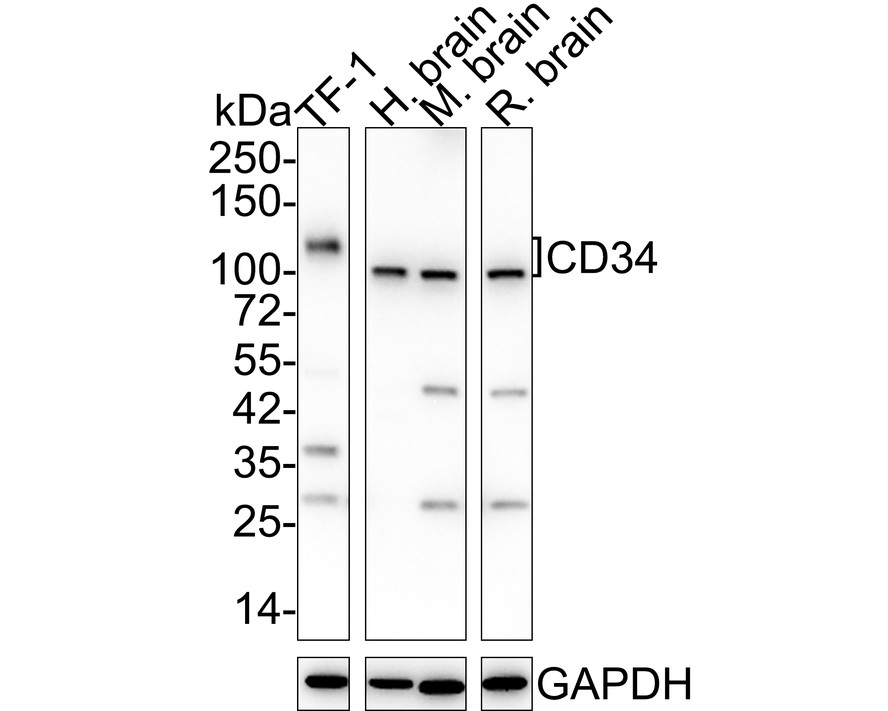
|
Fig1:
Western blot analysis of CD34 on different lysates with Rabbit anti-CD34 antibody (ER0802) at 1/2,000 dilution. Lane 1: TF-1 cell lysate (15 µg/Lane) Lane 2: Human brain tissue lysate (20 µg/Lane) Lane 3: Mouse brain tissue lysate (20 µg/Lane) Lane 4: Rat brain tissue lysate (20 µg/Lane) Predicted band size: 41 kDa Observed band size: 100~120 kDa Exposure time: 30 seconds; 4-20% SDS-PAGE gel. Proteins were transferred to a PVDF membrane and blocked with 5% NFDM/TBST for 1 hour at room temperature. The primary antibody (ER0802) at 1/2,000 dilution was used in 5% NFDM/TBST at 4℃ overnight. Goat Anti-Rabbit IgG - HRP Secondary Antibody (HA1001) at 1/50,000 dilution was used for 1 hour at room temperature. |
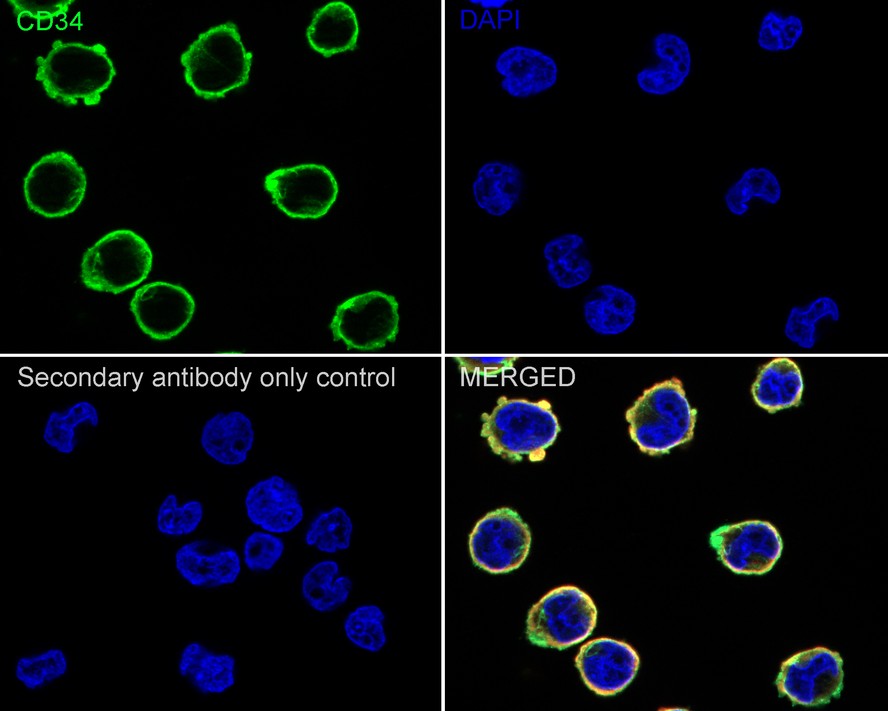
|
Fig2:
Immunocytochemistry analysis of TF-1 cells labeling CD34 with Rabbit anti-CD34 antibody (ER0802) at 1/250dilution. Cells were fixed in 4% paraformaldehyde for 20 minutes at room temperature, permeabilized with 0.1% Triton X-100 in PBS for 5 minutes at room temperature, then blocked with 1% BSA in 10% negative goat serum for 1 hour at room temperature. Cells were then incubated with Rabbit anti-CD34 antibody (ER0802) at 1/250dilution in 1% BSA in PBST overnight at 4 ℃. Goat Anti-Rabbit IgG H&L (iFluor™ 488, HA1121) was used as the secondary antibody at 1/1,000 dilution. PBS instead of the primary antibody was used as the secondary antibody only control. Nuclear DNA was labelled in blue with DAPI. Beta tubulin (M1305-2, red) was stained at 1/100 dilution overnight at +4℃. Goat Anti-Mouse IgG H&L (iFluor™ 594, HA1126) was used as the secondary antibody at 1/1,000 dilution. |
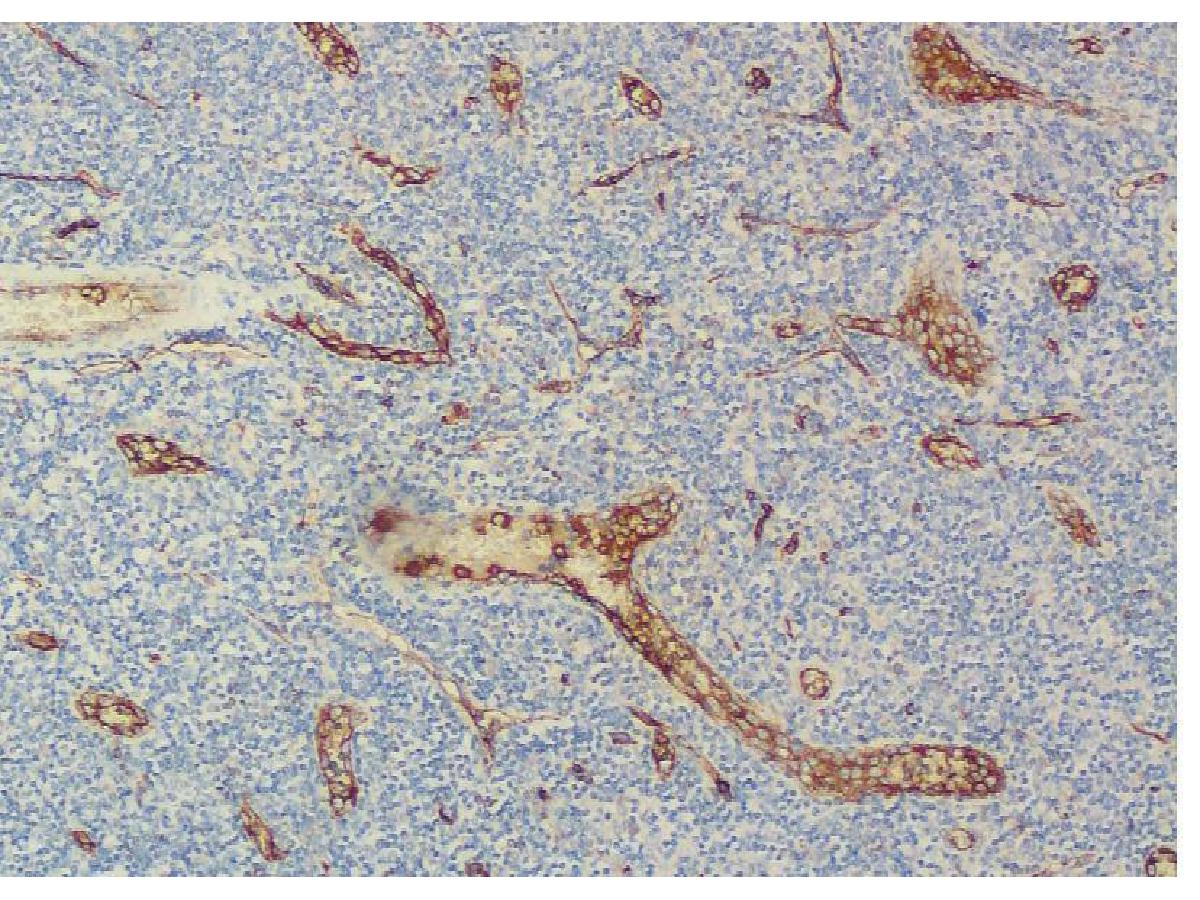
|
Fig3: Immunohistochemical analysis of paraffin-embedded human tonsil tissue using anti-CD34 antibody. Counter stained with hematoxylin. |
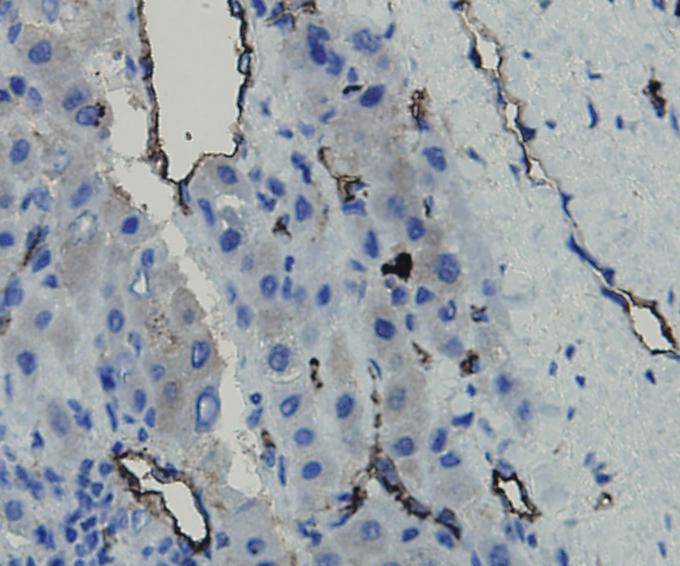
|
Fig4: Immunohistochemical analysis of paraffin-embedded human liver carcinoma tissue using anti-CD34 antibody. Counter stained with hematoxylin. |
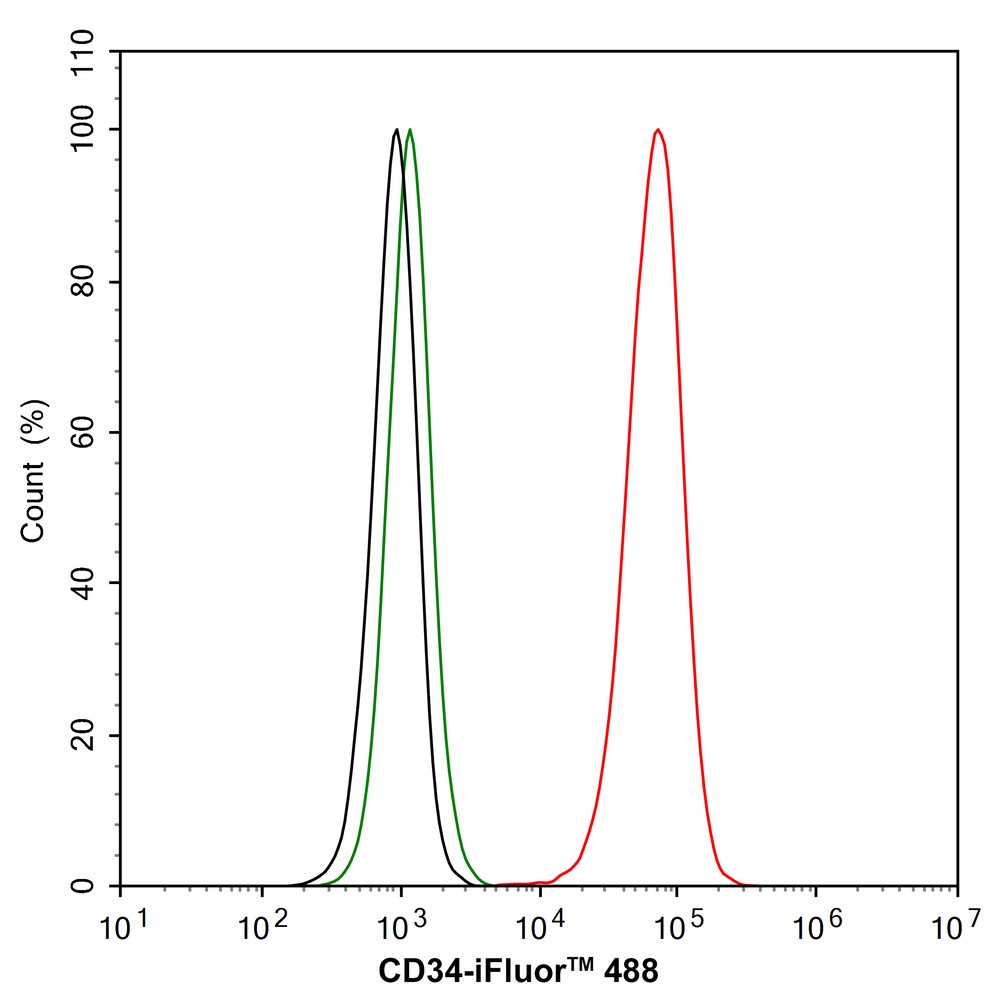
|
Fig5:
Flow cytometric analysis of TF-1 cells labeling CD34. Cells were fixed and permeabilized. Then stained with the primary antibody (ER0802, 1/1,000) (red) compared with Rabbit IgG Isotype Control (green). After incubation of the primary antibody at +4℃ for an hour, the cells were stained with a iFluor™ 488 conjugate-Goat anti-Rabbit IgG Secondary antibody (HA1121) at 1/1,000 dilution for 30 minutes at +4℃. Unlabelled sample was used as a control (cells without incubation with primary antibody; black). |
Note: All products are “FOR RESEARCH USE ONLY AND ARE NOT INTENDED FOR DIAGNOSTIC OR THERAPEUTIC USE”.